Plug wars: Which plug will your EV use?
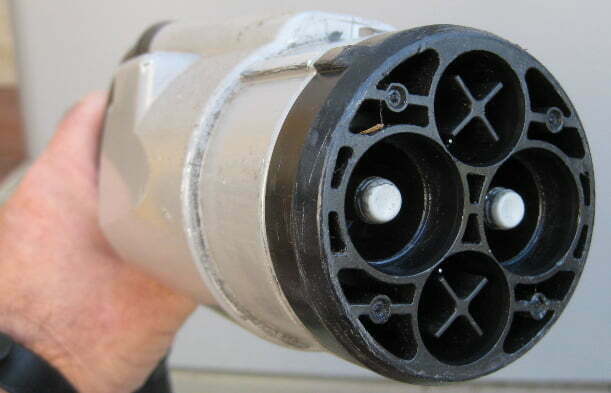
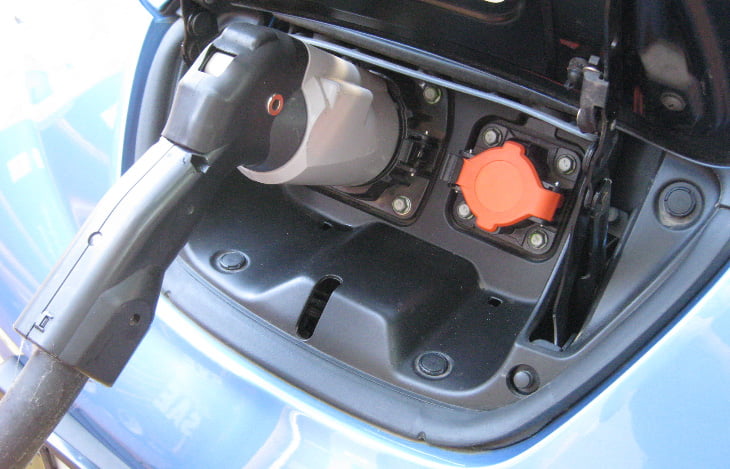
As the electric vehicle market expands, the world is moving towards more standardised charging plugs. Bryce Gaton takes a look at the state of play and where it is all heading.
When a new technology comes along that needs to share a ‘something’, some quite unholy wars have broken out between manufacturers over the formats and systems to use. In the process, some very good technologies have fallen by the wayside: Betamax videotapes and minidiscs are just a couple that come to mind.
In the case of electric vehicles (EVs), the fight is over which charging plugs and systems to use.
At first glance, it would seem to be quite simple—in 2003 an international standard, IEC 62196, for EV plugs and charging was created. So you’d think all EVs would be charged with the one plug/socket set, right?
Wrong—the standard only set the operating parameters (e.g. singe-phase AC, three-phase AC, DC, safety systems), not the plug types. As usual, industry came up with several compliant plugs and sockets.
A further complication is that EVs are gaining ever more battery capacity, so what is considered reasonable for slow, normal, fast and rapid charging rates is changing fast.
Plug types
So what are the current plug types and their capabilities?
J1772 (Type 1)
The J1772 system is often referred to as Type 1. It was the first EV plug for common use and was first adopted in Japan and North America where 100–120 V AC systems prevail. In Australia it provides for single-phase 230 V AC charging up to 32 A/7.2 kW charging rates (or three hours to charge a 24 kWh 2013+ Leaf), for example).
It is now mainly used in Japan, USA, Australia and New Zealand, and is being phased out in Europe.
Mennekes (Type 2)
Often referred to as Type 2, the Mennekes system was developed in Europe to take advantage of their higher voltage three-phase AC supply system. It provides for both single- and three-phase AC charging. Mennekes is generally used for up to 32 A/7.4 kW single-phase and 23 kW three-phase charging rates, but can do 43 kW at 63 A three-phase AC. It has the capacity for DC charging up to 80 A, but only Tesla uses this option—where they reportedly have beefed it up to 140 A.
Mennekes is mostly used in Europe and by Tesla in Australia and New Zealand. It was recently adopted for general use in New Zealand and is coming soon for new European EVs in Australia.
Combined Charging System (CCS)
Combined Charging System plugs and sockets are combinations of other standards with additional DC charging pins. The CCS 1 socket is a combination of a J1772 with separate DC pins and is used in North America. The socket accepts both J1772 and CCS 1 plugs. AC charging is as per J1772, with DC capable of up to 200 A.
The CCS 2 system, used in Europe, is a combination of the Mennekes system and separate DC pins. The socket accepts both Mennekes and CCS 2 plugs. AC charging is as per the Mennekes standard, again with DC charging up to 200 A.
Tesla
The Tesla standard system is used in North America and Japan, but not in Australia. It allows for slow charging using 100–120 V AC and fast charging using two-phase 200–240 V AC, as well as rapid DC charging using Tesla superchargers.
CHAdeMO (Type 4)
Sometimes referred to as Type 4, CHAdeMO is a DC-only charging plug, capable of up to 125 A. It was the earliest DC fast-charge option. It is used throughout the world, albeit in small numbers outside Japan and North America.
Bulky and needing a separate socket, it is now in competition with the three-phase AC Mennekes and CCS DC systems.
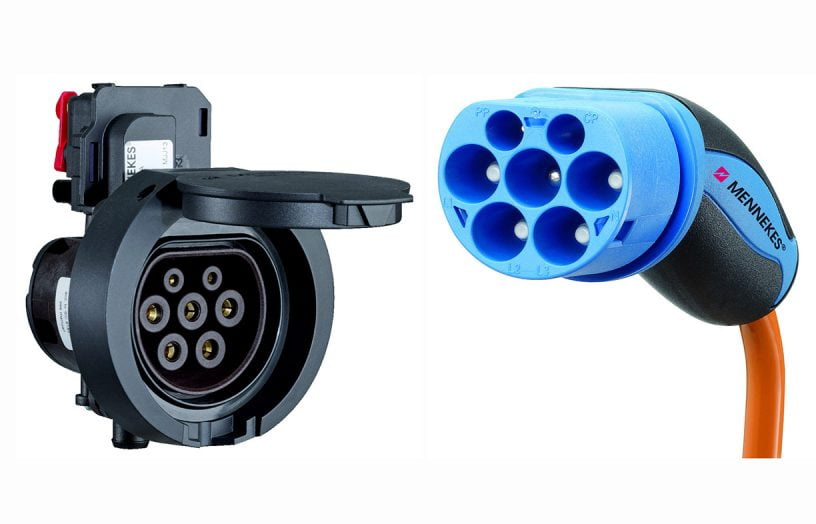
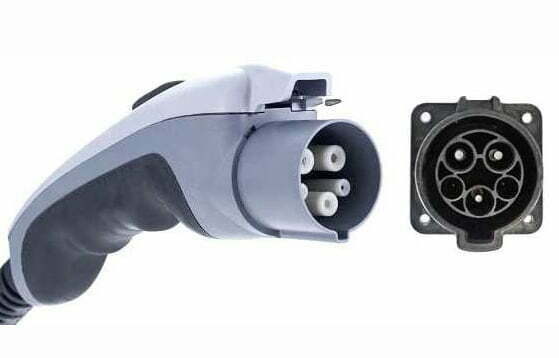
Past, present and future: world
Initially, J1772 and CHAdeMO were the main EV plug types in use around the world. However, J1772 is only single-phase and CHAdeMO is extremely bulky, needing a large space allowance in the vehicle for the separate socket, and is limited to 125 A. As a result, in 2015 European automakers agreed to adopt the Mennekes standard to replace both J1772 and CHAdeMO, with a phase-in to be completed by 2020.
By using three-phase AC with Mennekes, the need for DC charging (and the much greater costs of DC chargers) is significantly reduced. For example, the biggest European EV battery (the Renault Zoe at 41 kWh in battery capacity) can reach a full charge in less than two hours using a 23 kW, three-phase AC Mennekes connection.
However, with increasing battery sizes has come an ever-increasing need for even higher-current rapid-charging options. CCS was developed to offer a fast-charge DC option to replace CHAdeMO.
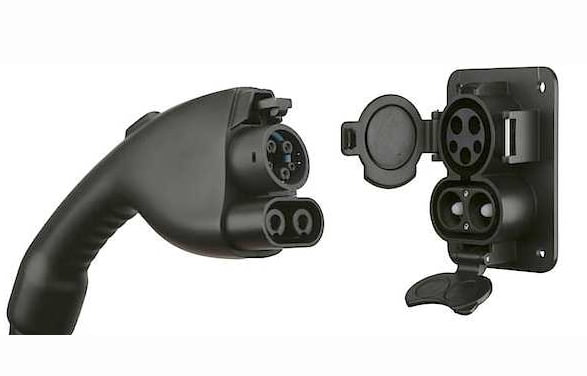

And in Australia
In Australia, we have largely been sheltered from the Plug Wars raging overseas, as most of the EVs available here have small batteries and are from Japanese manufacturers. Therefore J1772 and CHAdeMO (for fast-charge DC) have reigned supreme for all EVs except Teslas. Even BMW (a member of the CCS alliance) changes its Mennekes socket to J1772 for Australia.
However, this is all about to change with the coming introduction of the Renault Zoe to Australia. The Zoe only comes with a Mennekes plug and its fast-charge option uses three-phase AC with no DC option. A slow-charge lead for charging from a power point is an optional extra from Renault, or can be bought as an aftermarket item. BMW is also planning to soon stop changing its sockets to J1772 for Australia and use the European Mennekes/CCS 2 combo instead.
Mennekes/CCS 2 will become the charging plug for all Euro EV models as they become available here. US versions will also likely use Mennekes/CCS 2, as the need for right-hand drive here means they will be designed for the UK market (and thus Euro voltages) before reaching here.
This leaves the Japanese manufacturers. In the short term, they will most likely stick to CHAdeMO for DC fast charging as it’s their own standard. However, the cost of CHAdeMO chargers and plugs is much higher than a Mennekes three-phase AC fast-charge system.
Given that in Australia we really only have one manufacturer needing rapid-charge DC capability for long-range driving (Tesla) and they have their own network anyway, in the short term the chances are small that public infrastructure providers will choose to spend tens of thousands of dollars on any more CHAdeMO chargers that may get little use compared to the much cheaper three-phase only AC Mennekes ones.
In the medium term—beyond the current battery sizes—DC charging will come back into play. But given that DC capable CCS 2 chargers are cheaper than CHAdeMO ones (and have higher capacity DC charging rates), in the longer term, CHAdeMO may be in trouble!
On the other hand, for existing Australian EV owners, the settling of the Plug Wars will have little effect except for the need to buy a BYO adaptor lead.
Until now we have been using charging systems (electric vehicle supply equipment, or EVSEs) with a tethered lead. However, the new crop of Mennekes systems are based on the BYO lead principle, where the EV owner uses their own lead. BYO leads are also likely to become the norm for public charging stations as the holders of the public purse strings opt for the more vandal-resistant (and cheaper) lead-less charging stations.
For those mere mortals with J1772 vehicles and tethered systems, adaptor leads for Mennekes to J1772 are readily available.
Conversely, the new owners of Mennekes socket EVs like the Renault Zoe will need to buy slow-charge leads to charge using a power point. They will also need a J1772 to Mennekes adaptor lead if they wish to use existing single-phase J1772 tethered charging equipment.
Related articles
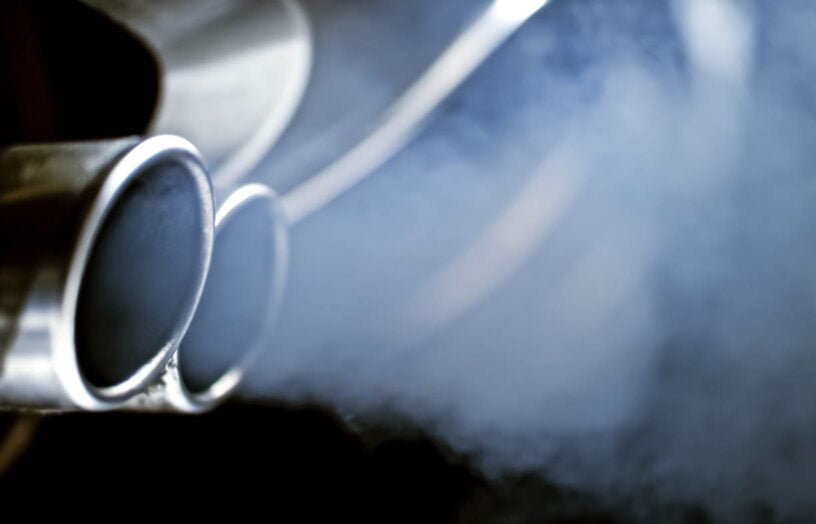 Transport & travel
Transport & travel
Petroleum is fast becoming a dirty word
John Hermans explains the negatives of the petroleum industry.
Read more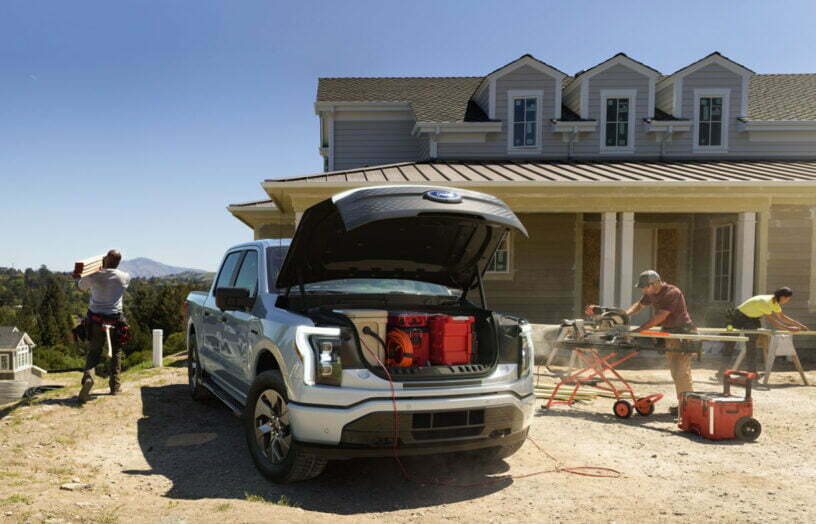 DIY
DIY
Bring on the electric ute
Bryce Gaton asks, will 2023 be the Australian ‘Year of the electric light commercial vehicle’?
Read more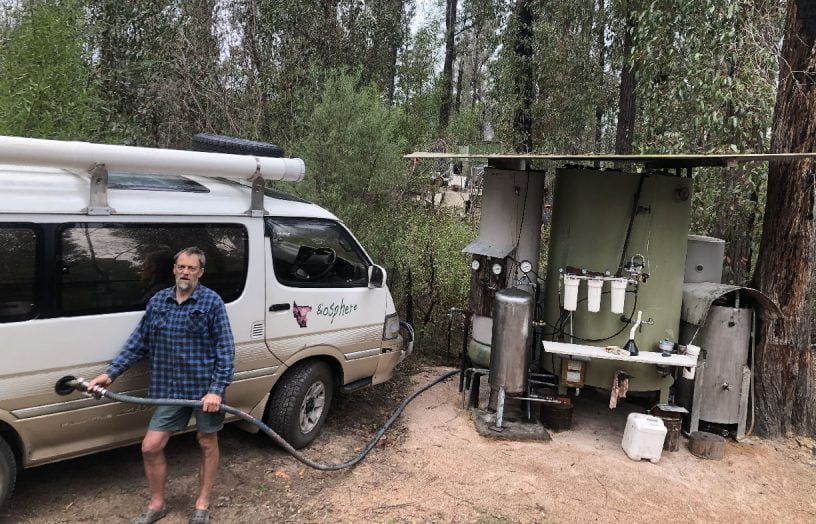 Transport & travel
Transport & travel
Biofuel vs battery
John Hermans gives his opinion on the best power source for electric vehicles.
Read more
